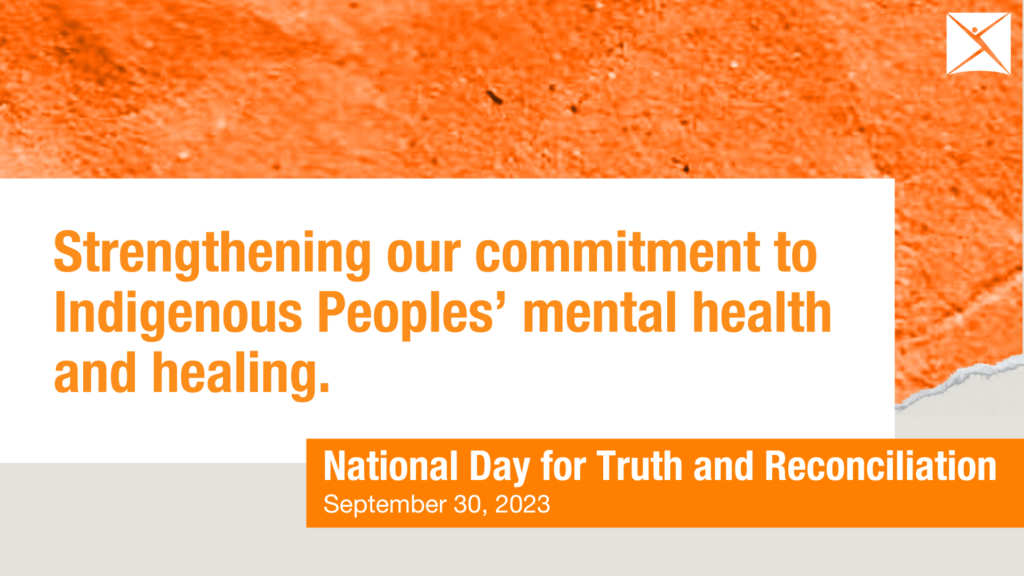Menu
Close

September 30 is the National Day for Truth and Reconciliation
Sep 29, 2023
September 30 is the National Day for Truth and Reconciliation, a time for non-Indigenous people to pause and acknowledge the history and ongoing effects of the residential school system in Canada and reflect on individual responsibility and action.
Reconciliation is an ongoing process that needs to be incorporated into every day of the year, not just September 30.
As an organization we are on a journey of learning and engaging with the process of reconciliation in meaningful ways, including the Calls to Action of the Truth and Reconciliation Commission of Canada.
Here are a few ways Nova Scotians can engage with the process of reconciliation along with resources to support your journey:
Recognize the word Indigenous refers to diverse and distinct nations
Indigenous is a collective name for First Nations, Inuit and Métis peoples, which includes hundreds of distinct and independent nations across the country (and even the world), each with unique histories, traditions and languages. Ask those you interact with how they identify and learn the names of the nations on whose land you live and work.
Learn the history between Indigenous and non-Indigenous peoples
The relationship between Indigenous and non-Indigenous people has been one of imbalance and injustice. It can be uncomfortable to learn about this history and to acknowledge how much of Canadian history minimizes and erases Indigenous peoples and how current policies continue to reinforce a colonial world view but learning is the key to growth and understanding.
Understand the history and legacy of residential schools
To engage with the process of reconciliation, we must acknowledge residential school experiences, impacts and consequences, including the intergenerational trauma experienced by Indigenous peoples.
For over 150 years, Indigenous children were forcibly removed from their families and sent to these schools, with the last school not closing until 1996. It is both a long and recent history.
Explore the unique intersections we have between treaty, constitutional, Indigenous and human rights in Canada
Indigenous and non-Indigenous peoples have different relationships with the Canadian government. The legal rights of Indigenous peoples have changed since Europeans first arrived on Turtle Island, from the Doctrine of Discovery to Confederation and the subsequent Indian Act* – these legal “rights” were based on the needs of the colonizers, not the intrinsic rights of Indigenous peoples.
The Canadian Constitution and, to a much greater extent, the United Nations Declaration on the Rights of Indigenous Peoples have sought to assert the inherent rights of Indigenous peoples.
To fully engage with the process of reconciliation, time and attention must be given to the power and agency that Indigenous nations are reclaiming, what that looks like and why it is important.
Recognize the rich contributions that Indigenous peoples have made to Canada
Canada is indebted to the diverse cultures and nations of Indigenous peoples and the rich history and knowledge they have contributed to Canada, including the country’s name (which likely comes from the Huron-Iroquois word “kanata,” meaning village or settlement) and our collective identity as a country.
According to the Calls to Action, supporting Indigenous peoples’ “cultural revitalization and integrating Indigenous knowledge systems, oral histories, laws, protocols and connections to the land are essential to the process of reconciliation.”
Create a culturally safe environment
To better understand the systemic structures of oppression and the importance of dismantling them, non-Indigenous people must learn about the treatment of Indigenous peoples within institutional environments, like schools and hospitals, and how anti-Indigenous racism has been embedded into policy and practice. With cultural safety training***, people can carefully and critically learn about the oppressive social structures within these institutions and how they impact the health and education of Indigenous peoples. Individuals and institutions can then begin to create and support equitable environments that are culturally safe and Indigenous-informed.
Creating a culturally safe environment is an important step in creating a culturally safe Canada, wherein Indigenous peoples are included in all spaces, without barrier and with access to traditional knowledge and practices.
Resources to Support your Learning Journey
- 6 Actions of ReconciliACTION
- Atlohsa Family Healing Services
- National Centre for Truth and Reconciliation
- Reconciliation Education
- Truth and Reconciliation Commission of Canada
- United Nations Declaration On The Rights Of Indigenous Peoples
- Whose Land
Anti-Racism Education
- 4 Seasons of Reconciliation Course
- Advancing Re(al)conciliation Course
- Certificate in Reconciliation Studies
- Indigenous Canada Course
- San’yas Indigenous Cultural Safety Training Program